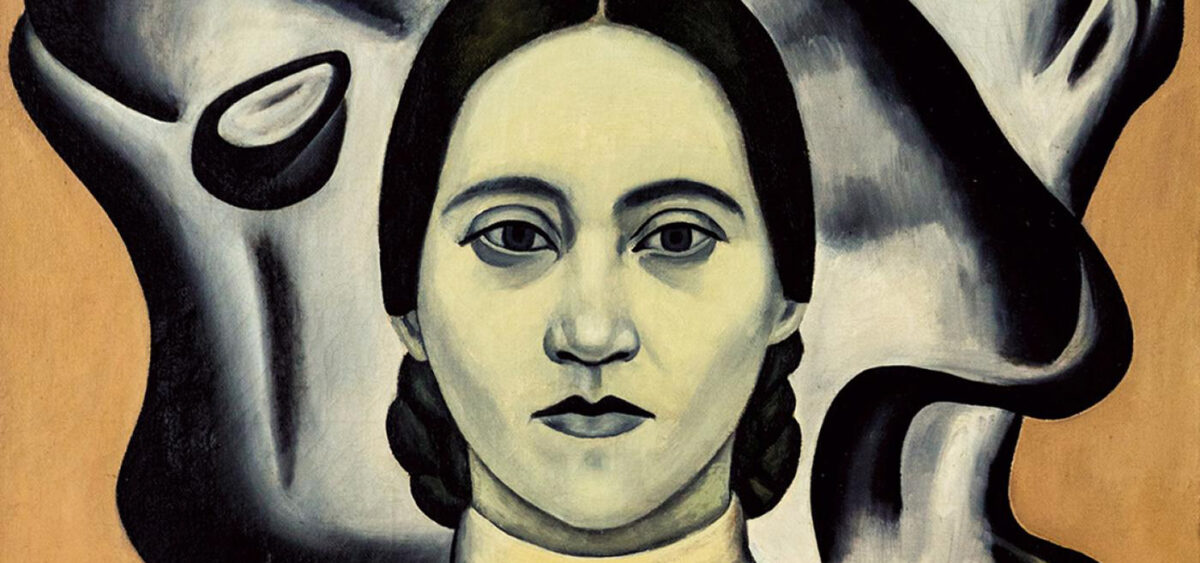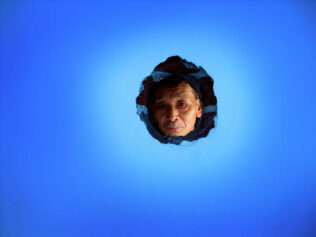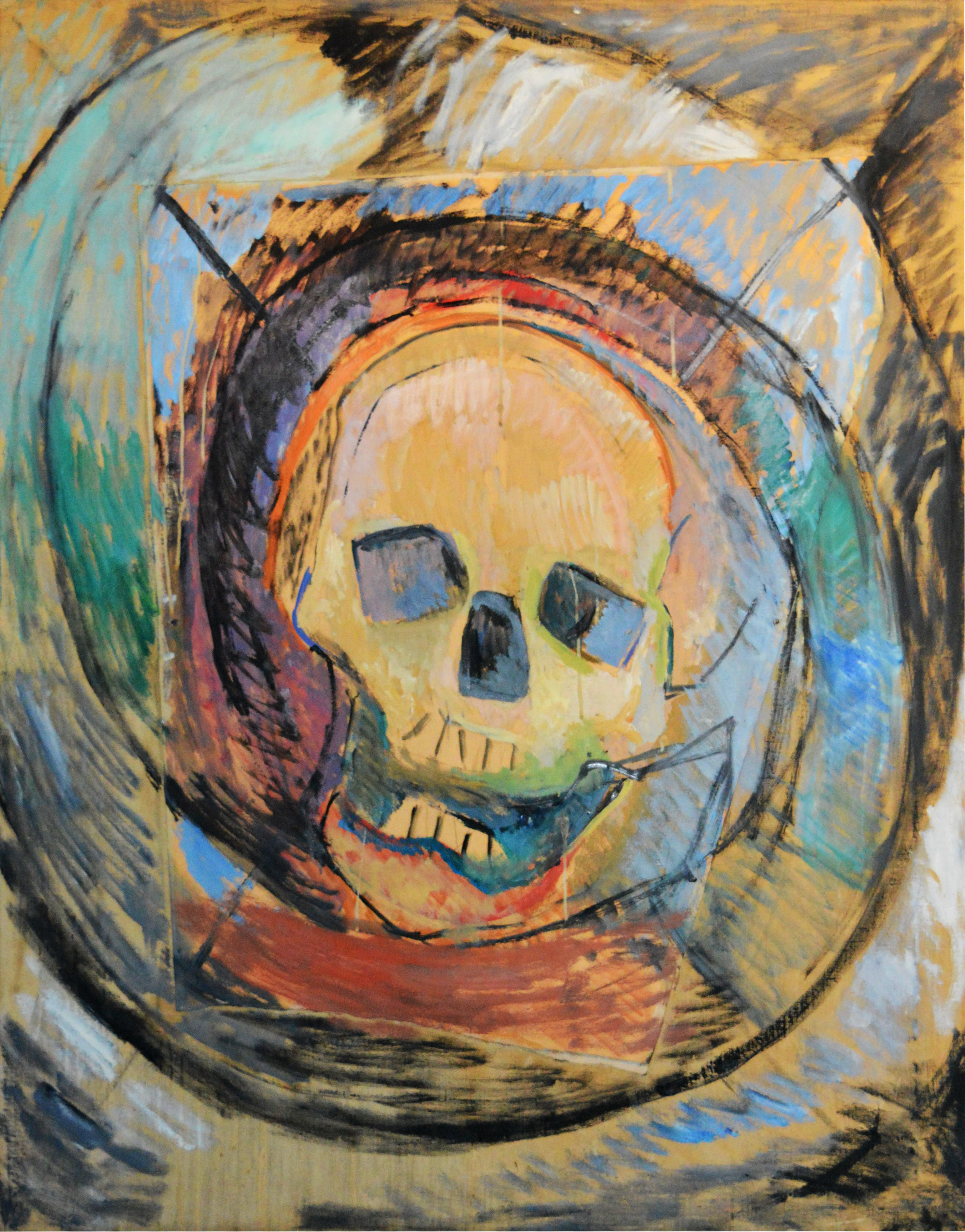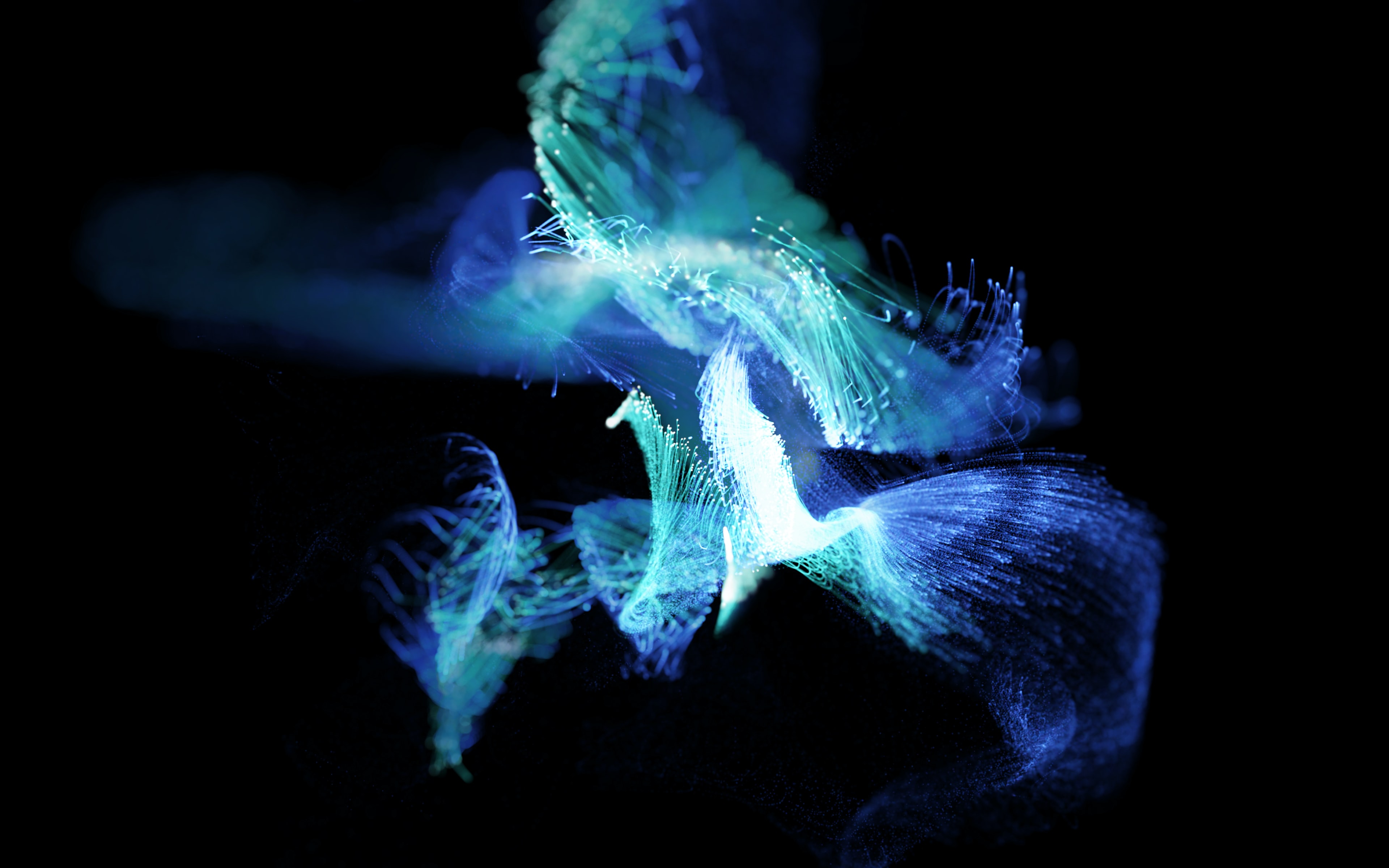
Have you ever heard of Wanda Chodasiewicz or Nadia Léger? Or maybe Madame Grabowska, Bauquier or Petrova? All these names refer to one painter – today barely remembered.
The protagonist of today’s article had a lifelong identity problem. She was Polish, Russian, a French citizen and finally Belarusian. She married three times and used at least five different surnames. She also changed her first names: she was Wanda, Nadzieja, and then Nadia. As an artist she practised completely different, sometimes opposing styles of painting. Still, she played a significant part in Polish art history.
Wandeczka – Strzemiński’s student
She was born as Wanda Chodasiewiczówna on 23rd September 1904 at a home farm in Osetishche (part of modern-day Belarus). She was educated at the Alexandrian Institute for Noble Ladies in Tambov and the local girls’ gymnasium; in 1918 she started evening courses in drawing and painting at the Palace of Arts in Belyov. Finally, around 1920, she left for Smolensk, where she continued her education at IZO-studio – an art atelier at the local education department. In fact, IZO-studio was a branch of a group called UNOVIS (Champions of New Art), established by Kazimir Malevich in February 1920; its members included Katarzyna Kobro and Władysław Strzemiński.
Wandeczka, as Strzemiński called her, came to Poland – probably at his prompting – in December 1921. Right after the war, in order to have somewhere to live and to support herself, she worked as a nanny. Later, she lived at an orphanage based at a nunnery on Mokotowska Street in Warsaw, while also painting icons and working as an assistant at a fashion atelier. Finally, in March 1923 she was accepted as an unenrolled student at the Fine Arts School in Warsaw. While there, she studied drawing with Miłosz Kotarbiński, printmaking with Władysław Skoczylas and painting at Karol Tichy’s studio.
Paris is worth Nadia
Warsaw’s Fine Arts School, renamed Fine Arts Academy in 1932, was never a good, progressive art school. No wonder, then, that in 1971 Wanda, who by then was already Nadia, would say: “Not to worry you, but I didn’t like your Academy. It taught traditional painting, and I wanted to paint abstraction.” But the school was useful to Wanda in another way. It was there that she met the well-born painter Stanisław Grabowski in 1923, marrying him that same year. Soon they had a daughter, also called Wanda, but the marriage was definitely unsuccessful. They parted ways officially in 1932, although their relationship had ended five years earlier.
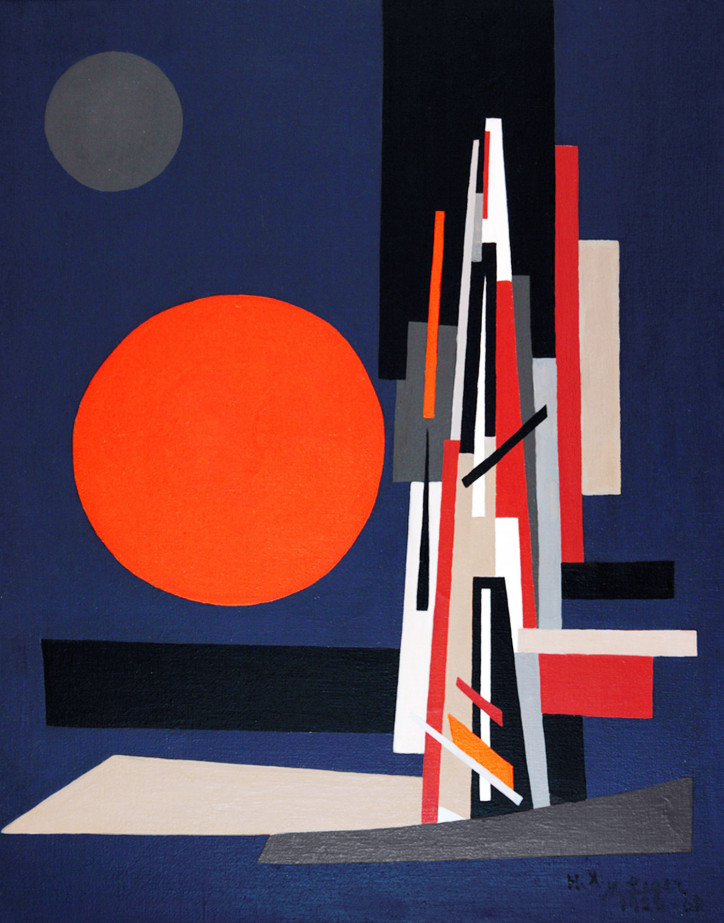
However, before they split up – in 1925 – Wanda Chodasiewicz-Grabowska and her husband went to Paris. They both enrolled at a private art school, the Académie Moderne. From 1924 onwards, the school was headed by two of the most fashionable artists of contemporary Paris: Fernand Léger and Amédée Ozenfant. Wanda and Stanisław initially studied under Ozenfant, who, importantly, spoke Russian and had just co-founded the artistic movement called Purism. After only a year of schooling, the Grabowskis opened a joint exhibition at the Galerie d’Art Contemporain, where they showed works inspired by their teacher.
Woman (and art) is fickle
In the autumn of 1928, Chodasiewicz-Grabowska had the idea of publishing a bilingual, Polish-French magazine about modern art. These plans could only be accomplished a year later, with a contribution from her father-in-law. According to Karolina Zychowicz – who wrote the only Polish monograph on the artist – during Grabowski senior’s visit at Stanisław and Wanda’s Parisian apartment on Rue Valette, he found out that his daughter-in-law was unwell because she had no proper winter coat. He offered money for a fur. Chodasiewicz-Grabowska cannily bought a cheaper rabbit model, and put the rest of the funds towards her publication. In 1929, the first issue of L’Art Contemporain – Modern Art came out, edited by poet Jan Brzękowski. Wanda was responsible for sourcing images for the magazine. It included reproductions of works by Ozenfant, Louis Marcoussis, Piet Mondrian and Pablo Picasso, as well as texts by Brzękowski, Ozenfant, Waldemar George and Jean Cassou. The cover was designed by Léger. The two subsequent issues were published in 1930. Although Władysław Strzemiński and Tadeusz Peiper criticized the magazine (the former paternalistically accused Wandeczka of self-promotion, and the latter didn’t approve of the poetry-related part of the publication), L’Art Contemporain – Modern Art remains a flagship publication of the Polish interwar avant-garde.
Despite his criticism, Strzemiński published an article in the third and final issue of L’Art Contemporain. He was counting on Chodasiewicz-Grabowska and Brzękowski’s extensive connections in the Parisian art world. Indeed, both editors played a large part in creating the International Collection of Modern Art, amassing in the years 1929–1932 a quantity of works presented by artists. The collection, which included paintings by such creators as Léger, Ozenfant, Jean Arp and Max Ernst – supplemented by works of native origin – was first made available to the wider public in February 1931 at the Julian and Kazimierz Bartoszewicz Museum of History and Art in Łódź. The collection gradually increased up until 1938. Currently, it is one of the three oldest collections of modern art in the world.
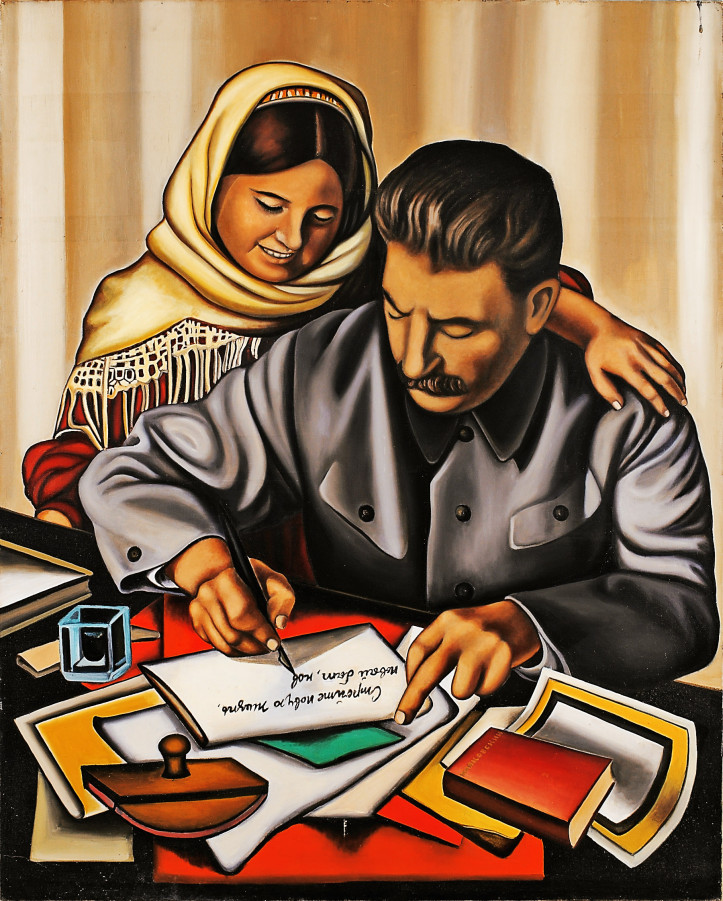
Meanwhile, in 1929, Amédée Ozenfant left the Académie Moderne to teach independently. Chodasiewicz’s artistic leanings, in turn, moved towards organic abstraction in the vein of Jean Arp. The collection of the Museum of Art in Łódź features a painting by her from that period, entitled Planimetric Composition: Vase. In 1931, Léger also quit his job at the Académie Moderne and, for a time, moved to the Académie de la Grande Chaumière, where a year later Chodasiewicz got the position of his assistant. They had met earlier, when she was publishing L’Art Contemporain. In the following year Léger opened his own school, the Académie de l’Art Contemporain, where, as experts emphasize, Chodasiewicz’s role was of utmost importance. Léger himself only visited the school on select days of the week; she did the day-to-day work with students, giving them notes and correcting them.
In her first years of work at Léger’s school, the artist met a working-class student, Georges Bauquier, with whom she started a relationship. At the end of the 1940s and the beginning of the 1950s Bauquier worked as the executive director of the school, and later of the institution called Atelier Fernand Léger. At that time, although their relationship wasn’t formalized, she signed some of her works with the name Nadia Bauquier. Her relationship with Bauquier was only formalized many years after Léger’s death, in 1969, although Nadia did not take her new husband’s name then. That was because the one she had was much more significant in the art world – she was called Nadia Léger.
Fernand Léger married Nadia in 1952, when he was 71, after the death of his first wife Jeanne and three years before his own death. As one can imagine, the marriage was more of a contract which obliged Nadia to look after the artist himself initially, and then after his legacy. After her husband’s death, she worked to promote his output, also internationally. Her largest project, however, was the construction of the Fernand Léger museum in Biot, a town in the French department of Alpes-Maritimes. In 1967, Nadia gifted the museum, along with a collection of 348 works by Léger, to the French state.
Comrade Petrova
As late as April 1930 Nadia Chodasiewicz-Grabowska participated in a joint exhibition by a collective of abstract artists called Cercle et Carré; she showed three paintings, all of them entitled Composition. But already in the mid-1930s she had started to create figurative pieces, mostly portraits and self-portraits in Léger’s style. At that time, she enrolled at the Society of the Friends of Soviet Union, which, we can assume, also meant joining the French Communist Party. Years later, she said: “It was natural and necessary like breathing. It wasn’t in a factory, nor at a large company, nor in philosophical books that I became aware of the cruel rules of capitalism. I felt it myself, I saw the way others lived. Both workers and young painters are completely dependent on the one who makes his large or small capital on their backs. Money, money, money.” 1950 marks the start of Nadia’s involvement in French socialist realism; she now signed her paintings with the name Petrova. She showed her new work in 1953 at the Parisian gallery Bernheim-Jeune. A year earlier she also participated in the Exhibition of Contemporary French Visual Arts at the Zachęta Gallery in Warsaw, but who could have guessed that the painting signed by Nadia Petrova was painted by Strzemiński’s erstwhile student.
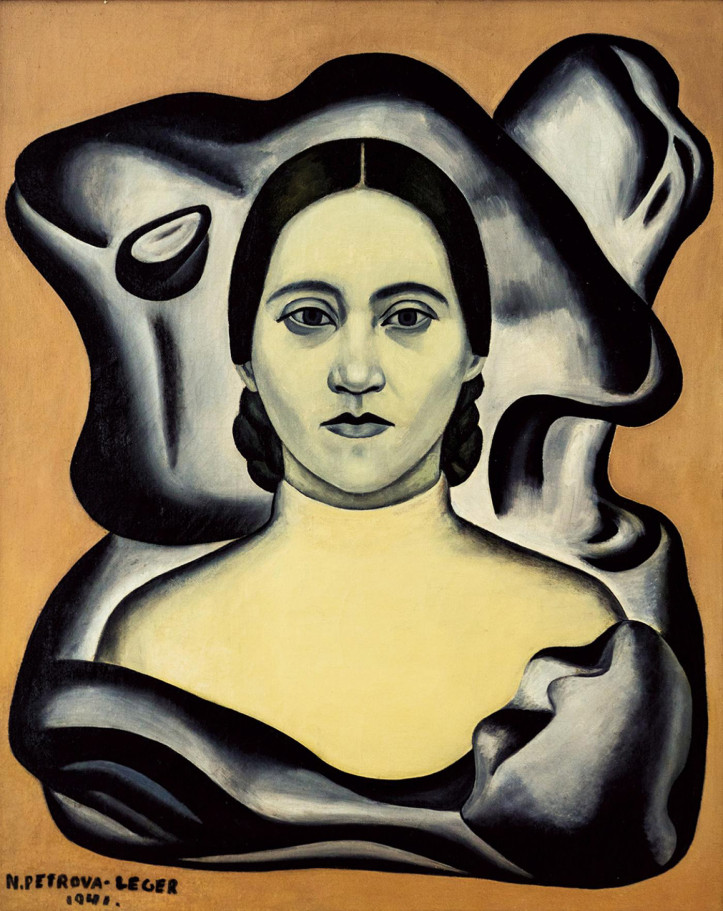
In 1956, the French painters’ adventure with socialist realism ended, and Petrova was no longer of use to Nadia Léger. Abstract art was rapidly returning. The artist remembered that during her early youth in Smolensk she had met Kazimir Malevich, whose fame was on the rise in France. She announced she had been his student. From the beginning of the 1960s, she started working on paintings that almost exactly replicated Malevich’s suprematist works with their double dates: for example, 1920–1960 or 1924–1967. What’s more, she collaborated with jewellers to produce suprematist jewellery.
However, these efforts failed to bring her fortune or recognition. The latter came from a completely different, although possibly not entirely unexpected direction. Some of those who have studied her biography surmise that she worked as a Soviet agent. If so, then more probably as a so-called agent of influence. Who can establish the truth?
Nadia Wanda Chodasiewicz-Grabowska-Bauquier-Petrova-Léger did not live to see the fall of communism. She died at home in Grasse, in the south of France, three years before the implementation of perestroika.
This article quotes the column Nadia Léger’s Reminiscences: The way to Paris was through Warsaw, Express Wieczorny 1971, issue 40.
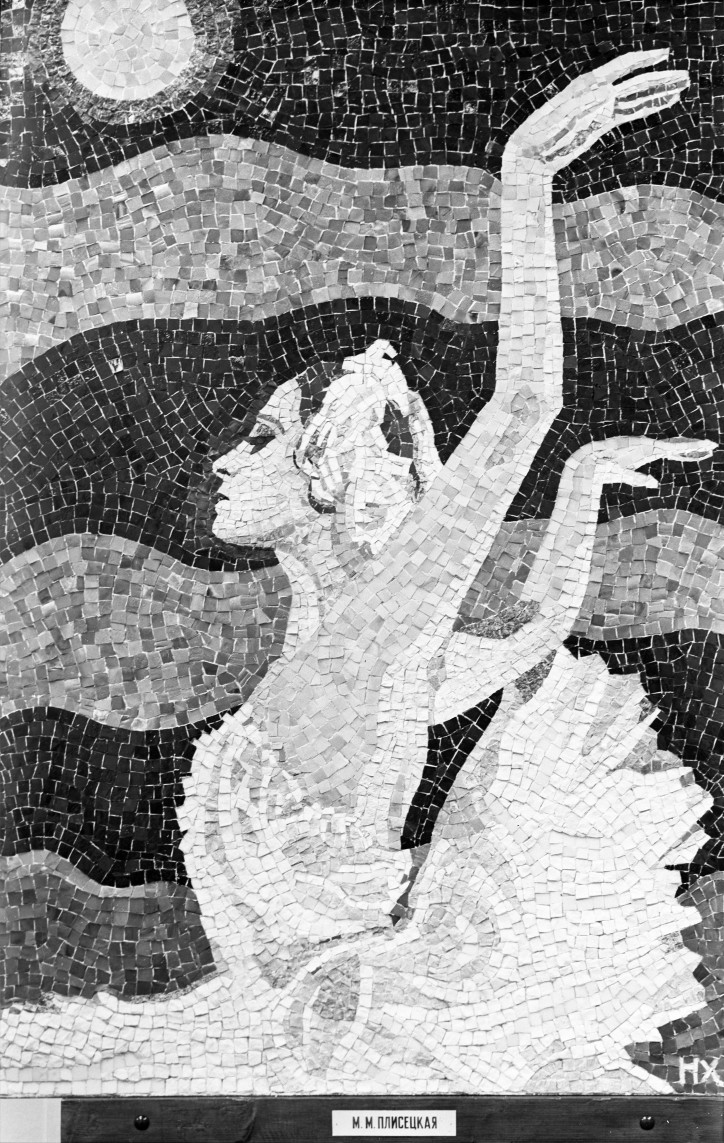
In April 1972, for the 50th anniversary of her artistic work, Nadia Léger was awarded a Soviet medal for the development of French-Soviet cooperation. The ceremony took place on the occasion of an exhibition of 65 monumental portraits done in the traditional technique of the mosaic. They were likenesses of prominent USRR figures: writers, musicians, cosmonauts and Communist Party activists. It took her two years – starting from 1969 – to make the project a reality, in collaboration with two Italian mosaicists. The portraits were first shown in Malakoff, a town near Paris; they then travelled to the Soviet Union. Today, some of them can be seen in Dubna near Moscow, at the Mir Culture Centre, and some in Zembin (Belarus), where there’s an exhibition room about the artist. Others have been dispersed or are hidden somewhere in Russian storehouses.
Translated from the Polish by Marta Dziurosz


